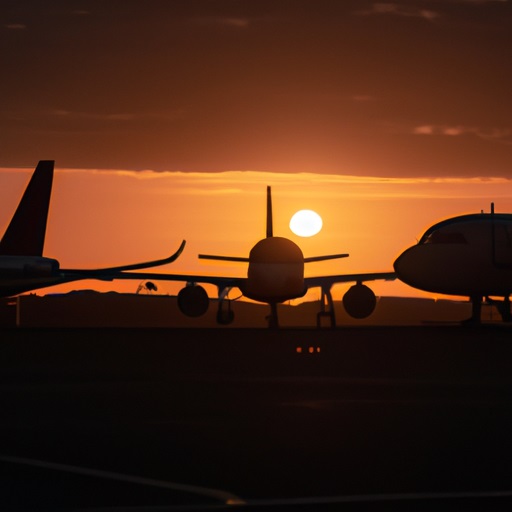
Which Cabin Class Is the Most Profitable for Airlines?
One of the most important decisions that airlines have to make is how to allocate their cabin space among different classes of service. The cabin class mix affects not only the revenue potential of each flight but also customer satisfaction and loyalty.
However, determining which cabin class is the most profitable for airlines is not straightforward, as it depends on various factors such as demand, costs, competition, and pricing strategies. This article delves into different aspects of cabin class profitability, examining the factors contributing to their revenue generation.
Understanding Airline Profitability Metrics
Before we compare cabin classes, it is essential to understand the metrics used to measure airline profitability. One key metric is the revenue per available seat mile (RASM), which calculates the revenue generated per seat mile flown.
Another important metric is the passenger load factor (PLF), which represents the percentage of available seats filled with passengers. A higher PLF indicates better aircraft utilization and, thus, higher revenue generation potential.
Economy Class
Economy class, also known as coach class, is the most basic and affordable cabin class offered by airlines. It typically comprises a large percentage of an aircraft’s seats, sometimes as much as 70-80%. Due to its lower price point, economy class attracts the highest number of passengers, contributing significantly to airlines’ overall revenue.
Despite the lower ticket prices, economy class can be very profitable for airlines, thanks to their ability to fill a large number of seats. Economy class is often characterized by high passenger load factors. Additionally, airlines can further increase profitability in this class by offering ancillary services such as extra legroom, checked luggage, or in-flight meals for an additional fee.
Premium Economy Class
Premium economy class offers passengers an enhanced travel experience compared to standard economy class, with benefits such as increased legroom, wider seats, and upgraded meals. While it is priced higher than economy class, it remains more affordable than business or first class, making it an attractive option for passengers seeking extra comfort without paying for a business or first class ticket. For example, a premium economy fare is usually 65% cheaper than a business class fare.
This cabin class has become increasingly popular among business as well as leisure travelers, resulting in many airlines incorporating premium economy into their aircraft configurations.
The premium economy class can significantly contribute to an airline’s profitability due to its higher ticket prices compared to economy class, while still maintaining relatively high passenger load factors. In addition, the cost of providing enhanced services in a premium economy is typically lower than that of business class, resulting in higher profit margins.
Business Class
Business class offers a more premium experience than both economy classes, with larger seats, more legroom, better meals, and other amenities. As a result, business class tickets are typically priced higher, generating higher revenue per seat. Business class passengers often account for a significant portion of an airline’s total revenue, despite representing a smaller percentage of seats on board.
The business class cabin’s profitability is mainly driven by its high RASM, as the higher ticket prices more than compensate for the reduced number of seats. Additionally, business class passengers are often more loyal and willing to pay a premium for the enhanced experience, further contributing to revenue generation.
First Class
First class represents the epitome of luxury in air travel, offering the most spacious seats, personalized service, and exclusive amenities. While first-class tickets are the most expensive, this cabin class often has the lowest number of seats on an aircraft, sometimes as few as 8-12.
While first-class cabins generate high RASM due to their high ticket prices, their overall contribution to an airline’s total revenue is limited by the small number of seats. Additionally, the high cost of providing the luxury amenities and personalized service in first class may offset some of the revenue generated.
Low-Cost Carriers vs. Full-Service Carriers
The profitability of cabin classes also varies depending on the airline’s business model. Low-cost carriers (LCCs) such as Southwest Airlines and Ryanair primarily focus on providing economy class service at affordable prices, while full-service carriers (FSCs) like Delta Air Lines and Lufthansa offer a range of cabin classes, including economy, business, and first class.
Low-cost carriers rely heavily on optimizing their operations and minimizing costs to maximize profitability. They often achieve high load factors in their economy class cabins by offering competitive pricing and efficient operations. Instead, they emphasize ancillary revenue from services like checked baggage, priority boarding, or seat selection to boost their profitability. For example, according to IdeaWorksCompany, in 2020, Allegiant, Spirit, Viva Aerobus, and Wizz Air generated over 50% of their overall revenue from ancillary services.
On the other hand, full-service carriers cater to a broader range of passengers and emphasize premium cabin offerings. Business class and, to a lesser extent, first-class cabins generate significant revenue for these airlines. FSCs often invest heavily in enhancing the premium travel experience to attract high-paying passengers, who are more likely to be loyal customers and contribute to the airlines’ overall profitability.
Factors That Affect Airline Cabin Class Profitability
First class and business class generate higher RASM per seat than the economy or premium economy seats. However, this does not mean that airlines should always maximize their higher cabin classes at the expense of lower ones. There are several challenges and trade-offs that airlines have to consider when designing their cabin class mix.
Demand
Higher cabin classes have lower demand elasticity than lower ones, which means that they are more sensitive to changes in price and economic conditions. Therefore, airlines have to balance the trade-off between higher fares and lower load factors for higher cabin classes.
In addition, airlines have to account for their customer base’s different preferences and segments, such as leisure versus business travelers, frequent flyers versus occasional flyers, and long-haul versus short-haul flights.
Costs
Higher cabin classes have higher fixed costs than lower ones, such as the investment in seats, entertainment systems, catering, and crew training. Therefore, airlines have to ensure that they can recover these costs by achieving high occupancy rates and yields for higher cabin classes.
Moreover, airlines have to consider the opportunity cost of allocating more space to higher cabin classes, which means less space for other seats that could generate more revenue per square meter.
Competition
High-priced cabin classes could face more intense competition from other carriers that offer similar or better products and services at lower prices. Therefore, airlines have to differentiate themselves from their competitors by offering superior value propositions and customer experiences.
Airlines must monitor competitors’ pricing, market trends, and customer expectations, which are constantly evolving. Or else, they risk operating a high-cost cabin class at an extremely thin profit margin or an extremely low load factor.
Pricing strategies
Higher cabin classes require more sophisticated pricing strategies than lower ones, such as dynamic pricing, yield management, revenue management, and ancillary revenue generation. These strategies aim to optimize the revenue potential of each seat by adjusting the fares according to each flight’s demand and supply conditions.
However, these strategies also entail more complexity and uncertainty for airlines, as they have to deal with factors such as seasonality, booking patterns, customer behavior, and price sensitivity.
Conclusion
Thus, there is no definitive answer to which cabin class is the most profitable for airlines, as it depends on various factors that vary across different airlines, markets, and situations.
The profitability of a cabin class is influenced by various factors, including the airline’s business model, operational efficiency, and the level of service offered. Low-cost carriers typically rely on economy class and ancillary revenue to maximize profitability, while full-service carriers generate substantial revenue from their premium cabins.
Airlines must adopt a holistic approach that considers the revenue and cost implications of each cabin class mix decision. Moreover, it is essential for airlines to continually evaluate and optimize their cabin class offerings to meet passenger demands and maintain profitability in an ever-changing and competitive industry.
By striking the right balance between service quality, pricing, and capacity, airlines can maximize the profitability of their cabin classes and ensure long-term success.





